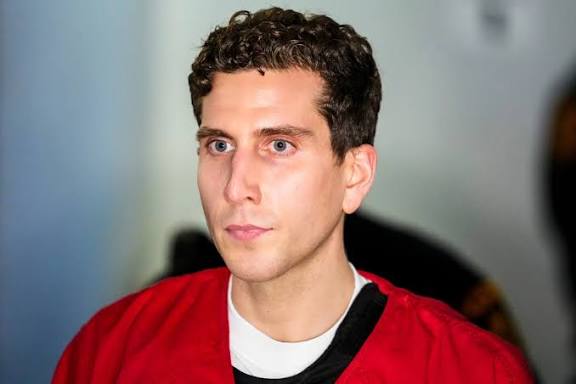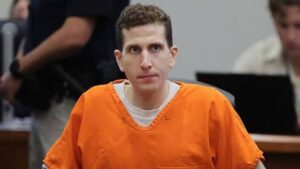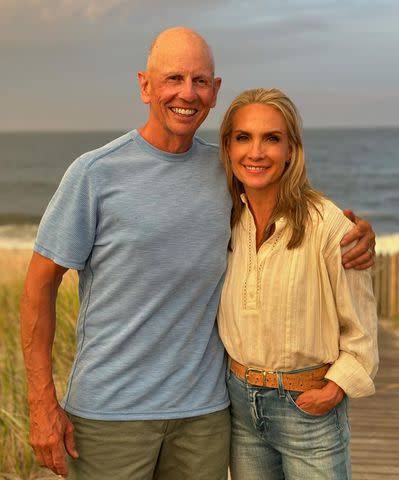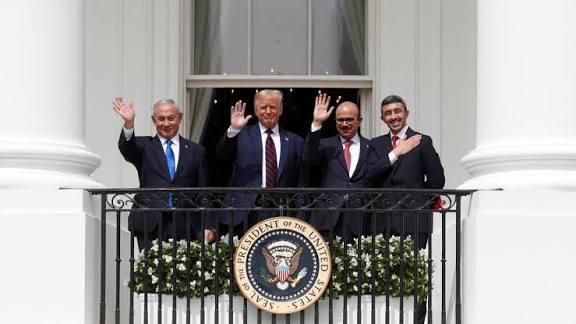Bryan Kohberger documentary: Assassin demands remove shackles,wikipedia,parents

Accused murderer Brian Kohbarger pleaded guilty to the murders of four University of Idaho students. Here’s how horrific crimes and investigations are carried out. Today we will discuss about Bryan Kohberger documentary: Assassin demands remove shackles,wikipedia,parents
Bryan Kohberger documentary: Assassin demands remove shackles,wikipedia,parents
True-crime documentaries often aim to dig beyond headlines: they probe into legal strategies, public perceptions, media framing, and the human lives behind gruesome events. The case of Bryan Christopher Kohberger, arrested and later convicted for the murders of four University of Idaho students in November 2022, has drawn intense media scrutiny. Documentaries about the case confront interplay among courtroom drama, online information (including Wikipedia), legal tactics (such as demands to remove shackles), and the emotional narratives of victims’ families and Kohberger’s parents.
This article explores how recent documentaries treat these dimensions: the legal drama over shackles, how Wikipedia and public knowledge have been mobilized, how parents (victims’ and accused) are portrayed, and what narrative choices underlie “true crime” treatment of this tragic case.
Background: The Crime, Arrest, and Legal Outcome

The 2022 University of Idaho murders
In the early hours of November 13, 2022, four University of Idaho students—Madison “Maddie” Mogen, Kaylee Goncalves, Xana Kernodle, and Ethan Chapin—were fatally stabbed in an off-campus rental home in Moscow, Idaho.
Because the victims lived together in a house adjacent to campus, the crime generated fear and intense media coverage across Idaho and beyond. Investigators, initially constrained by scarce suspects, followed DNA leads, cell-phone data, and suspicious online purchases.
On December 30, 2022, police arrested Bryan Christopher Kohberger, then a 28-year-old PhD student in criminology at Washington State University, in Monroe County, Pennsylvania. He was extradited to Idaho to face charges of four counts of first-degree murder and one count of burglary.
Initially, Kohberger pleaded not guilty. Prosecutors pushed for a death penalty, but on July 2, 2025, Kohberger reversed course and entered a guilty plea to all counts, thereby avoiding a capital trial.
On July 23, 2025, the judge sentenced Kohberger to four consecutive life sentences without parole, plus 10 years for the burglary count.
One of the major documentary series tackling this case is One Night in Idaho: The College Murders, produced by Amazon MGM Studios and Skydance Television, which premiered in July 2025.
Documentary Framing: What Do Filmmakers Emphasize?
Documentary creators must decide which threads to emphasize and which to downplay. In the case of Kohberger, several dramatic tensions present themselves:
-
Courtroom and legal battles—especially how the defense and prosecution clash over evidence, theory, and rights (e.g. shackles, garb, jury bias).
-
Media and public narrative—including Wikipedia, social media, and the uncontrollable spread of rumor and speculation.
-
Human emotional arcs—how victims’ families cope; how the accused’s own family is portrayed; whether redemption, blame, or trauma narratives dominate.
-
Unanswered questions—motive, alternate suspects, forensic uncertainties.
Legal drama and the “shackles issue”
One aspect that documentaries often highlight is how the defense pushes for neutral, fair appearances in court. A key flashpoint in many criminal trials is whether a defendant should be presented in restraints or shackles, or forced to wear prison garb, which some argue may prejudice a jury.
In other more recent cases, defense attorneys have requested that defendants be allowed to appear in civilian clothes and without shackles, arguing that otherwise jurors might unconsciously perceive them as dangerous or guilty. In a recent case not strictly about Kohberger, the defense even cited his case as precedent: some defendants argued for removal of shackles and prison garb in view of how Kohberger was allowed to appear unshackled.
While I found no publicly documented motion in Kohberger’s trial specifically on shackles, the general dynamic fits into what many documentaries explore: how much “presentation” in court shapes perception—and whether the criminal justice system offers formal protections or is skewed by appearance.
Presentation of the accused vs the victims
In many true-crime documentaries, the accused is framed through a dual lens: as an intellectual puzzle (the “mind of a killer”) and as a human figure whose history is probed. In One Night in Idaho, Kohberger’s identity (his academic life, online activity, background) is juxtaposed with the lives, relationships, and stories of the four victims.
By highlighting interviews with friends and families of victims, the series seeks to humanize the loss and prevent the victims from being mere plot points.
At the same time, documentaries often find space to explore “what made him tick”: his education in criminology, his online behavior, and even the paradox that someone studying crime became its perpetrator. (Notably, Katherine Ramsland, a well-known forensic psychologist and author, had been one of Kohberger’s instructors. Her perspective features in commentary around how he “fooled” those who studied him. )
Motive, gaps, and alternative theories
Even with a guilty plea, many viewers want to know why—what motivated Kohberger to commit four brutal murders. Documentaries typically explore theories (psychological, ideological, relational) while acknowledging uncertainty. One Night in Idaho is no exception: it presents forensic details, investigative dead ends, inconsistencies, and contested theories.
Because the plea precluded a full jury trial, the record is somewhat constrained. Documentarians must then rely more heavily on police reports, interviews, and archived footage rather than cross-examination drama.
Wikipedia, Online Narratives, and Information Control
An often underappreciated battleground in high-profile criminal cases is Wikipedia and public, crowd-sourced knowledge. Documentaries that cover modern true crime do not ignore this dimension—after all, many viewers consult Wikipedia before, during, or after watching.
The Wikipedia page and edit controversies
The Wikipedia entry on the 2022 University of Idaho murders provides a succinct, factual summary: crime timeline, arrest, legal proceedings, sentencing, and aftermath.
However, behind the scenes, edits to highly contested pages often draw heated attention. At one point in May 2024, editors observed that all references to “Bryan Kohberger” were briefly removed from the related Wikipedia article. The removals triggered debate and were later reversed.
Such incidents underscore how truth, perception, and editorial control collide. Documentaries about Kohberger can use this tension to comment on the shaping of public memory: who gets to write history, how fast misinformation spreads, and how even Wikipedia becomes a contested site.
Documentary vs digital folklore
True-crime documentaries live in tension with the rise of digital folklore: social media speculation, conspiracy theories, Reddit threads, and true-crime fandoms. The way a documentary presents a neat narrative can sometimes clash with the messiness of online speculation.
Some viewers may approach the documentary already laden with opinions formed from viral threads. The documentary thus has to balance creating a coherent, digestible narrative while resisting oversimplification.
When documentaries mention Wikipedia or online discourse, they often highlight the instability of “public truth”—how facts can shift, be contested, or edited in real time, long after a crime has passed. In the Kohberger case, including Wikipedia’s edit controversies (however brief) provides a meta-commentary on how consensus is constructed.
The Role of Parents: Victims’ Families and the Accused’s Family
No true-crime narrative is complete without the voices of those most affected. Documentaries must walk a delicate line: respecting trauma, avoiding exploitation, and giving voice to grief, anger, longing, and accountability.
Victims’ families: grief, advocacy, narrative ownership
For the families of Madison, Kaylee, Xana, and Ethan, the documentary offers a platform for telling their version of events, resisting being eclipsed by the figure of the killer. Some key patterns emerge:
-
Remembering the person, not just the victim: Families often want the audience to see more than “the murdered student”—they want the full personality, hopes, relationships, and presence.
-
Anger, healing, and public presence: Many family members speak about the tension between wanting justice and wanting to heal. Documentaries typically show how families grapple with whether to appear publicly or retreat into privacy.
-
Foundations and memorial work: In some cases, families form foundations or scholarships in memory of their lost child. In the Kohberger case, the families have worked to preserve memory, advocate for accountability, and shape how the victims are publicly remembered.
-
Critique of plea and legal system: Some families express frustration if they feel excluded from decisions (such as plea agreements) or if restraint of punitive options (e.g. death penalty) seems to diminish accountability from their viewpoint. Reports after the plea suggest critics among victim families felt justice was incomplete.
In the context of the documentary, these voices anchor the moral stakes: crime is not abstract, but a rupture in lived lives.
Kohberger’s parents: portrayal, silence, sympathy
When documentaries address the family of an accused criminal, they tread a very fine line. On the one hand, humanizing the family may risk eliciting sympathy for the perpetrator; on the other, excluding them entirely may feel one-sided.
In Kohberger’s case, public accounts of his parents are relatively sparse. Some documentaries explore:
-
Background and upbringing: What was Kohberger’s family life like? How might childhood or family dynamics inform (though not excuse) later behavior?
-
Silence or nonparticipation: Some family members choose not to speak publicly, or to limit comment. This silence itself becomes a narrative choice—are they complicit, protective, grieving, or internally fracturing?
-
Emotional collision: Documentaries sometimes depict how parents must negotiate guilt, shame, hope for redemption, and societal stigmatization. Do they stand by their child? Do they distance themselves?
Given that part of Kohberger’s public persona is that of an advanced criminology student, documentary makers may explore whether his parents recognized warning signs or have reflections after the fact. Some news accounts mention that Kohberger sometimes ignored his mother or sister when exiting court after sentencing, which can feed into portrayals of family dynamics in the narrative.
However, care must be taken to avoid sensationalizing or misrepresenting relatives who may themselves be private or traumatized.
Key Themes and Ethical Challenges in Documentary Storytelling
Balancing accountability and sensitivity
True-crime documentaries walk a moral tightrope. They seek to expose wrongdoing, root out negligence, and satisfy public curiosity—or demand for justice. Yet, they must avoid re-traumatizing survivors or turning victims’ stories into spectacle.
In the Kohberger case, where the crime involved multiple victims, some of them young students, the responsibility is even greater. Documentary creators must:
-
Use victims’ names, voices, stories (not anonymizing them).
-
Obtain consent where possible for family interviews.
-
Give space to reflection rather than constant sensational detail.
-
Be transparent about uncertainties (lack of motive, gaps in evidence).
Structuring a compelling narrative amid incomplete knowledge
Unlike fictional narratives, true crime has serious constraints: evidence can be sealed, legal proceedings can be truncated (e.g. by plea bargains), and motive may remain opaque. Documentaries hence often adopt one of two modes:
-
Investigative mode: treating the documentary itself as detective work, uncovering new clues, following leads, sometimes raising new questions.
-
Reflective mode: less about discovering unknown facts and more about interpreting meaning, relationships, and the human consequences of crime.
In One Night in Idaho, the series uses a layered strategy, blending forensic details, archived footage, investigative interviews, and emotional testimonies to fill out a tapestry of what’s known—and what may forever remain uncertain.
The risk of glorifying the killer
One persistent critique of true crime is that it can inadvertently glorify or amplify the killer’s persona. Filmmakers must be vigilant to avoid granting the accused undue centrality or charisma. By structuring the narrative to center victims’ lives and the effects of the crime, documentaries mitigate that risk.
In Kohberger’s case, a student of criminology, there is a meta-tension: interest in his intellectual profile might tempt a “mind of the killer” approach. Responsible documentaries push back, ensuring he doesn’t overshadow the harm done.
Interplay with public perceptions and media cycles
The release of a documentary often reshapes public memory. It may influence how subsequent articles, Wikipedia pages, or media stories frame the case. Documentary makers are thus participants, not just observers, in the ongoing story of the crime.
By referencing Wikipedia editing controversies, editing choices, or digital debates, documentaries can make their viewers aware of how mediated our understanding of such crimes is. The Kohberger case offers a particularly relevant site for exploring the intersection of narrative, reputation, and information control.
The “Shackles Demand” Angle: Why It Matters
While I did not find explicit public records of a formal “shackles removal request” filed by Kohberger’s defense, the broader theme remains central to many criminal trials and their documentary depiction. Below is why that legal issue often features heavily in true-crime narratives, and how it might (or might not) fit into Kohberger’s story.
Why shackles/gate clothing matter in courtroom theater
-
Perception bias: A defendant appearing in shackles or prison garb can subtly prompt jurors to see them as dangerous or already guilty. Defense attorneys often argue this violates the defendant’s right to equal dignity before the jury.
-
Fair trial rights: Courts sometimes must weigh whether the security risk justifies restraints against potential prejudice to the defendant.
-
Precedents and appeals: Some appellate rulings have overturned convictions when improperly imposed restraints might have biased jurors.
Because such motions sit at the interface of legal technicality and human perception, documentary narratives often spotlight them as markers of how procedural decisions shape justice.
Citing Kohberger in other cases
In a published news article, defenders in a separate case (an alleged assassin in Utah) invoked Kohberger’s treatment in court as precedent for allowing their client to appear unshackled and in civilian clothes.
This invocation suggests that Kohberger’s handling in court has already entered into broader discussion about courtroom dignity and rights. A documentary about Kohberger could—and likely does—discuss whether he enjoyed such courtroom appearances, and what implications that has for fairness, spectacle, and advocacy.
What a documentary might explore (or hypothesize)
-
Did Kohberger’s defense request to be unshackled or wear neutral attire? If so, were there objections or appeals?
-
Did the judge rule on the visual presentation of the defendant?
-
How did media coverage around courtroom appearance affect public perception?
-
Did the production of the documentary itself evoke scenes of restraint, imagery, or courtroom symbolism?
Even absent a public record of a formal shackles dispute, the motif is telling: the question of how the accused is framed in court becomes part of the story of justice, symbolism, and power.
Narrative Flow: Sample Outline of a Documentary Treatment
Below is a sketch of how a documentary might structure its narrative around the themes we’ve discussed.
-
Opening: The Crime Day
-
Scene setting in Moscow, Idaho; a quiet college town disrupted.
-
Flash timeline of Nov 13, 2022.
-
Introduce the victims as individuals—not just names.
-
-
Media Shock and Public Reaction
-
Early speculation, social media panic, university response.
-
Introduction of public narratives, rumors, and how early media frames shaped public understanding.
-
-
Investigation Trail
-
Forensic leads: DNA on a knife sheath, cell tower pings, online purchases.
-
Breaking into investigative leads: which avenues succeeded, which were dead ends.
-
-
Arrest and Psychological Profile
-
Who is Kohberger? His background, academic life, social footprint.
-
Expert commentary, including from his former instructors (e.g. Ramsland).
-
-
Legal Battle & Courtroom Theater
-
Charges, defense motions, prosecution strategy.
-
Any debate over visual appearance, restraints, jury bias.
-
How courtroom presentation matters in perception.
-
-
Families’ Voices
-
Interviews with victims’ parents, siblings, friends.
-
How they remember the person behind the victim.
-
Their priorities: justice, memory, legacy.
-
-
Accused’s Family & Silent Spaces
-
Attempts (if any) to interview Kohberger’s family.
-
What silence or public statements tell us about complicity, trauma, or fracture.
-
-
Motive, Theories, and Unknowns
-
Multiple competing theories.
-
Gaps in proof, unresolved questions.
-
Documentary’s own stance (if any) on what is most plausible.
-
-
Plea Deal and Aftermath
-
The decision to plead guilty rather than face death penalty.
-
Sentencing.
-
Reactions: relief, frustration, closure—or lack thereof.
-
-
Memory and Narrative Control
-
Wikipedia editing fight.
-
Social media debates.
-
How documentaries recast the public narrative going forward.
-
-
Conclusion: Endpoints and Open Wounds
-
What does justice look like now?
-
How survivors live with absence.
-
The lingering question: what does it mean to “know” a crime?
-
Why Viewers Care—and What Documentary Offers
Psychological fascination and moral engagement
True-crime draws audiences because it confronts extreme human behavior, the breakdown of norms, and often the unpredictability of evil. In the Kohberger case, the added twist—someone studying crime committing crime—magnifies the intrigue.
But documentaries also ask viewers to hold moral territory: compassion, criticism, wonder, outrage. A well-crafted documentary encourages not just suspense, but reflection: about victims, systems, guilt, and how society responds.
Educating about justice, not just dramatizing it
Viewers often learn about evidence, procedure, legal wrangling, and the limits of forensics. Some documentaries succeed in making the public more literate about how trials actually work—and where they fail.
In the Kohberger series, presentation of forensic detail, cell-phone mapping, and investigative methodology helps demystify investigative tradecraft.
Reclaiming victims’ stories
One risk in true crime is that victims fade into the backdrop of the “killer’s story.” Documentaries like One Night in Idaho seek to center victims’ voices, letting survivors, family, and friends guide the narrative.
Documentary as continuing justice
A definitive verdict (e.g. life sentences) doesn’t always close the public narrative. Documentaries become part of how the case is remembered and interpreted long after courts adjourn. They shape how the public imagines motive, responsibility, and memory.
For the Kohberger case, this is particularly salient because of the unanswered question of motive and how much of the public record remains sealed or obscured.
Limitations, Critiques, and Ethical Tensions
No documentary is perfect. Some limitations and critiques that apply here include:
-
Uneven access: Some family members decline to participate, or legal restrictions bar access to sealed records. The narrative may therefore privilege voices who agreed to speak.
-
Retrospective bias: Documentaries know outcomes in advance. That can lead to teleological (hindsight) storytelling: making earlier events seem inexorable.
-
Sensationalism vs depth: True crime can overemphasize gore or dramatic tension and underemphasize systemic causes (mental health, institutional failure, policing constraints).
-
Platform constraints: Many documentary series aim for bingeability or viewer metrics; that can push them toward cliffhangers or dramatization rather than slow, contemplative nuance.
-
Glorification risk: As mentioned earlier, giving too much screen time—or charisma—to a murderer can inadvertently amplify their myth.
Audiences should watch critically, recognizing that documentaries mediate justice, not merely report it.
Conclusion
The story of Bryan Kohberger and the murders of four University of Idaho students has already reverberated through public imagination, legal debates, and media representation. Documentaries that undertake this case must navigate multiple tensions: the spectacle of courtroom procedure, the fragility of digital memory (e.g. Wikipedia), the emotional weight of family narratives, and the moral burden of telling a crime story at all.
By weaving legal details (such as shackles and courtroom appearance), editing choices (what images, what timeline), and the voices of victims and accused, documentaries do more than entertain. They shape how we remember, judge, and reckon with violence in public life.
How useful was this post?
Click on a star to rate it!
Average rating 0 / 5. Vote count: 0
No votes so far! Be the first to rate this post.
About the Author
usa5911.com
Administrator
Hi, I’m Gurdeep Singh, a professional content writer from India with over 3 years of experience in the field. I specialize in covering U.S. politics, delivering timely and engaging content tailored specifically for an American audience. Along with my dedicated team, we track and report on all the latest political trends, news, and in-depth analysis shaping the United States today. Our goal is to provide clear, factual, and compelling content that keeps readers informed and engaged with the ever-changing political landscape.




